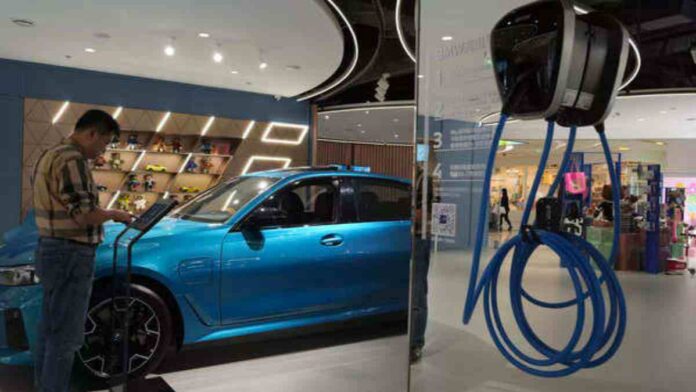Industry leaders anticipate that as the price differential between battery-powered and fossil fuel-powered passenger vehicles closes, more Indians would choose for the more environmentally friendly alternative when purchasing cars and SUVs.
As recently as 2020, the average cost of an electric passenger car was more than two times (137%) more than the cost of a comparable petrol-powered model. According to statistics from automotive consultant firm Jato Dynamics that difference has now closed to 73%.
Due to tighter pollution standards that necessitated new vehicle modifications, conventional passenger automobiles with internal combustion engines (ICE) have increased in price throughout this time. EVs are becoming more accessible at the same time due to government incentives and falling battery prices. Industry insiders predicted that the tendency would likely continue.
The price of batteries, which once made up as much as 40% of the cost of an electric vehicle, is declining as lithium and other raw materials needed in their production become more affordable. Consumers are receiving this advantage thanks to automakers.
Adoption is anticipated to rise as the price gap closes. In fiscal 2023, EV sales in India totaled over 60,000 units, or 1.1% of all passenger car sales, up from 0.6% in the prior year. By 2024–2025, this percentage is projected to rise to 3-4%, and by 2030, it will reach 17%.
SUVs have a smaller pricing differential between electric and gasoline-powered models than hatchbacks. For larger cars, adoption is anticipated to happen more quickly.
The minimum allowable driving distance with a fully charged battery is necessary for quicker EV adoption. The recommended minimum driving distance with a fully charged battery is greater than 200 km for quicker EV adoption. Regardless of the vehicle category, a battery pack with the proper dimensions and capacity will be required to support this range. According to Chandra of Tata Motors, the percentage of premium required for a lower segment EV ends up being larger when compared to its ICE option from the customer’s point of view. Therefore, in upper segment vehicles and SUVs, EVs can approach price parity with their ICE equivalents more quickly.
Economic value serves as the underlying justification for consumer purchases. Currently, EV adoption is strongest among vehicles costing between 10 and 18 lakh. However, manufacturers claim that only few models are offered in this “sweet spot”.
Clearly, affordability, technology-driven features, value, and the provision of a healthy battery range are all connected to the faster adoption of EVs. The majority of future models will be produced on platforms created specifically for electric vehicles, which will help keep costs down.



